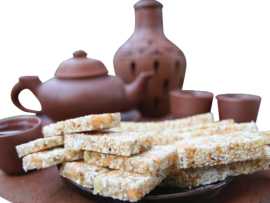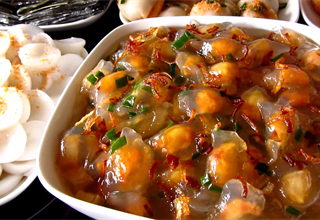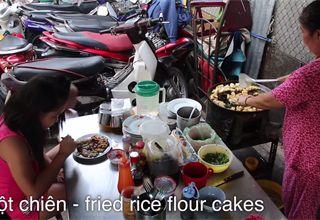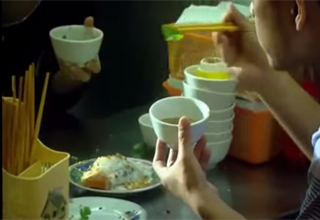Banh cay is a legendary and symbolic cake but can this traditional cake survive in the 21st century?
Ancient Vietnamese history is steeped in countless legends and myths. Even stories from
The king was said to have had a handsome son, who one day followed his father on a routine trip to survey the rice fields of the kingdom. The young prince spotted a young woman planting rice who was not only beautiful but possessed a sweet singing voice as well. Needless to say the young prince was instantly smitten.
However, the king had already promised that his son would marry the daughter of one of his most trusted generals. Despite his son’s pleas, at first the king refused to change his mind for the sake of his son’s happiness.
But the son was truly head over heels and he kept badgering his father until he finally agreed on one condition: his son could only marry the young woman if she could make a cake that perfectly symbolised the marriage of heaven and earth, a union which Vietnamese people believe created life.
The young woman travelled far and wide searching for an inspirational ingredient that would help her make the perfect cake. Eventually she found a kind of sweet rice growing near a village called Nguyen (located in Thai Binh province).
This rice is what we call “lua nep” (glutinous or sticky rice) and with the help of a genie she used it to make an oblong cake, which she called Banh Cai as “cai” in Vietnamese refers to the female sex, a symbol of reproduction, creation and sacrifice (Over time the pronunciation and spelling of banh cay changed and it became known as Banh Cay).
But afterwards the young woman did not want to return to her homeland. She presumed pessimistically that in her absence the prince had married the general’s daughter anyway. She also had fallen in love with the wondrous nature around her and so she decided to stay in Nguyen village.
But the prince was dutifully waiting for his sweetheart – he waited through spring, summer and winter but she did not come back. When springtime rolled around again, he decided to steal away from the capital to look for her. When he found her, they returned together and showed the cake to the king, who was suitably impressed, not that the young couple cared.
The young prince had no interest in continuing life in the royal court and so the couple returned to Nguyen village where they taught the local residents how to plant rice and make the cake.
But there is another legend about banh cay. In this story a poor woman living by the sea had a dream in which a mother fiddler crab (Cay in Vietnamese) is hugging her son in the middle of the angry sea while calling for help. The woman ran out of her house and swam into the sea to save them but the crabs were nowhere to be seen.
But the dream inspired her to make a cake which she named after the fiddler crabs. On her deathbed the woman was still haunted by her vision and obsessed with the strange fiddler crabs. She even requested that her children bury her at sea.
One day, a mandarin from the royal court came to the woman’s village by the sea. The villagers were busy preparing for the Lunar New Year festival but the mandarin was invited to sit down and enjoy some tea and cake. The mandarin sampled some of the old woman’s banh cay and he liked it so much he brought some back for the king.
The king was also impressed and every year he demanded more cake to be delivered to the royal court and ever since the cake grew in popularity throughout the country.
Modern times
No matter which legend you prefer, or believe, the cake is still made today in Nguyen village in Thai Binh province. Although there are only a small number of families that produce the cake. Pham Thi Minh, an 80-year-old from Nguyen village, says her family has been producing the cake for nearly 100 years. She claims the trick is that the glutinous rice grains selected for the cake must be equally plump.
After being roasted softly, the grains are pounded into starch then rolled into small balls. The balls are mixed with bitter melon and fried in oil. After that the balls are mixed with malted rice, coconut and sugar paste, roasted sesames and peanuts. The mixture is poured into a mould and left until it cools and solidifies.
“In the past, the cake was only made for festivals, during New Year or for weddings. But now it is made and eaten all year round,” Minh says. For Thai Binh people, the cake is highly symbolic. At important meetings or events the cake will always make an appearance.
There’s not much profit in producing the cake and in recent years the number of households making banh cay has inevitably dwindled. But Minh’s family is determined to keep the business going. “Banh cay has to compete with so much mass produced confectionery nowadays so we have to protect it and promote it wherever we can,” says Pham Thanh Van, Minh’s 18 year old daughter, speaking at a recent Hanoi Food and Beverage Trade Fair.
According to Minh, like the craft villages around the country, Nguyen village also needs state investment to sustain and revive banh cay production. “Villagers cannot revive the business themselves. They need support to access markets,” she says.
Source: VietNamNet/Time-out

















COMMENTS